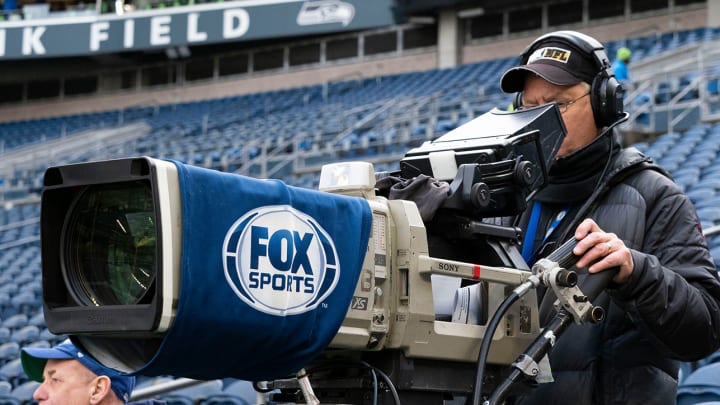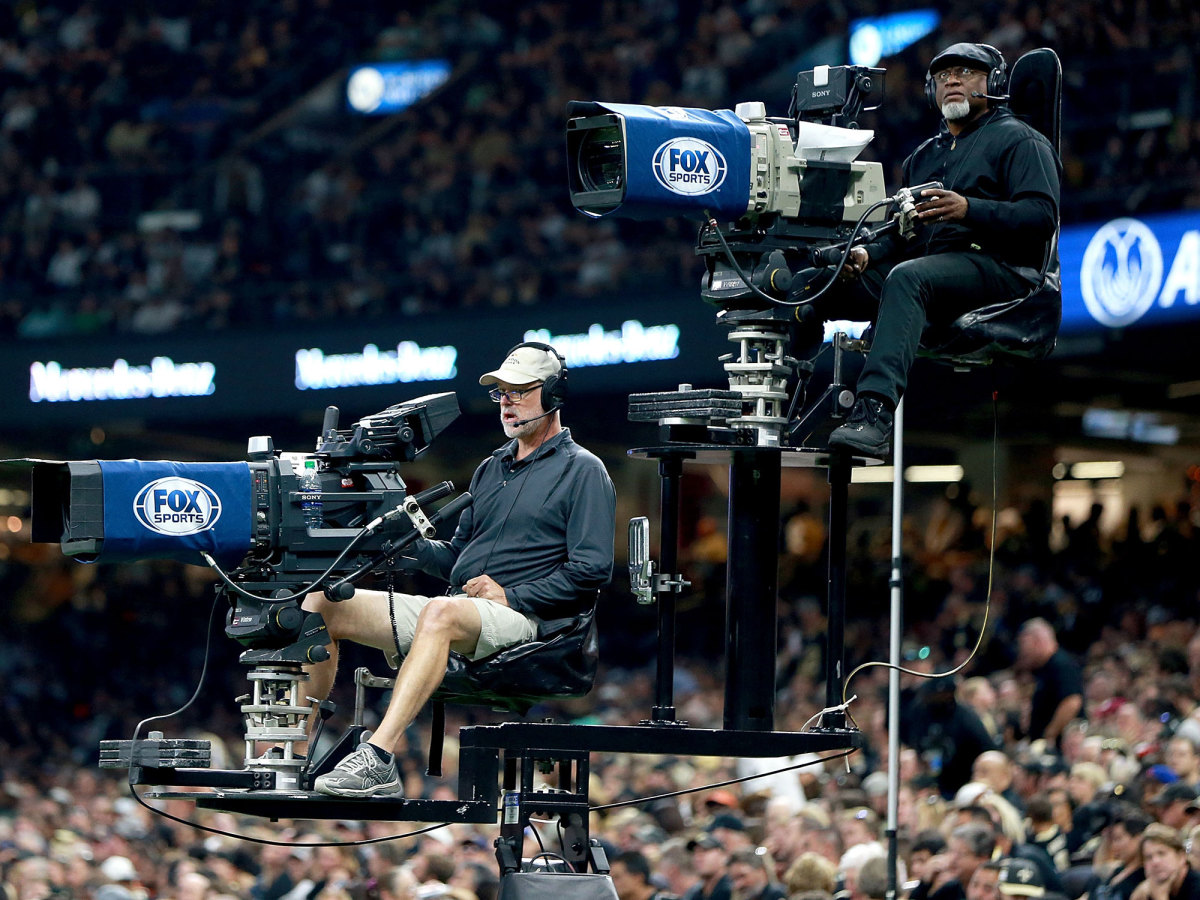NFL’s Outdated Review System Makes Networks ‘an Extension of Officiating’

Jim Nantz wants a better view—not at Heinz Field or Gillette or Arrowhead, where he spends his NFL Sundays, but in New York, where those games are increasingly decided by Al Riveron in a Park Avenue command center.
“You're now such a big part of the story,” Nantz told Riveron when the NFL’s top official visited CBS for a preseason meeting. “We need to watch you guys in the command center.” ESPN made a similar request to put a camera in Riveron’s gameday hub. Both were declined for now.
One problem: fans might be dismayed by what they would find, which is Riveron making season-altering calls with access more befitting an armchair ref. He only sees the same broadcast feed viewers get at home, though special tools allow him to rewatch specific replays. That means the available angles change based on which network is airing the game and when, with primetime showcases getting more cameras than a regional afternoon tilt. On an individual play, the number of looks can vary based on where the player in question lined up and whether he’s a star or a scrub.
In the stadium, TV producers have even more power. Assistant coaches tasked with telling their bosses whether to challenge a given call are making that decision based off a TV broadcast airing in their booth. Replay officials with the power to stop the game under two minutes or after scores and turnovers rely on the same feed.
Pass interference now being challengeable only complicates the issue, as a controversial Redskins offensive pass interference infraction that wasn’t picked up by the game broadcast demonstrated this preseason.
In #CINvsWAS, the on-field officials called OPI for a push off by WAS 13 at the 50-yard line, well before he jumped to catch the ball. There was no clear & obvious visual evidence from the available broadcast video that the ruling was incorrect, so the on-field ruling stands. pic.twitter.com/EhdAqFOc9Q
— NFL Officiating (@NFLOfficiating) August 16, 2019
“We’re there to chronicle the event—you don’t ever want to become a part of it—and we’re on a little bit of a slippery slope there because we really are responsible for the angles that could impact the game,” CBS lead game producer Jim Rikhoff said.
Don’t worry, I found the setup hard to believe too. But it’s the truth. Producer after producer confirmed it, as did the NFL’s operations website (see Slide 3). There was no misunderstanding. While othersportsbuild increasingly complex review systems, America’s biggest league has so far passed on even installing its own field cameras, citing cost and complexity.
“In essence we are an extension of officiating,” Monday Night Football lead producer Jay Rothman said. “The looks we provide determine these calls. You hope like hell to have them…. But that puts a lot of pressure on us—I feel it, and everybody feels it.”
Coaches have caught on. Sunday Night Football executive producer Fred Gaudelli and Rothman both said they’d met with multiple younger coaches this offseason to explain their camera arrangements, telling the coaches to be more confident challenging a call in primetime, especially when challenging something in the middle of the field or off the ball.
Previously, it was Jack Del Rio asking Gaudelli for a map of camera locations and Tony Dungy who got an apology from Gaudelli after the broadcast failed to show a definitive angle of a Troy Brown drop in time for Dungy to challenge during a 2005 matchup in Foxborough. (You can see the play below.)
Gaudelli changed his production philosophy after that Colts-Patriots broadcast. Whereas he liked showing the fans and the sidelines after a dramatic touchdown at home, he realized on any close play, he needed to show a replay as soon as possible.
When Riveron visited this preseason, Gaudelli told him showing potential defensive pass interference shouldn’t be a problem, since the clock will likely be stopped. But if there’s an uncalled OPI followed by a catch with the clock running, “there may not be time to squeeze in a replay,” Gaudelli said. “I’d try to see if we could do it, but if I had any doubts, I’m airing on the side of not missing the next snap.” Sorry, Dungy.
“I said from the beginning, if it’s officiating it should be officiating, it shouldn’t be television,” Dungy says now. “We shouldn’t be relying on six cameras in this game and 24 in that one. We shouldn’t rely on a producer giving us the shot… but that fell on deaf ears.”
Dungy deputized two booth assistants to watch the broadcast when their side of the ball was on the sideline. Sometimes he’d call up after a close play, asking if the TV feed had a good angle, only to be told, They’re showing you, Coach. “I always tried to wait and see,” Dungy said. “I would see something in front of me but it doesn’t matter if they don’t have the shot.”

Since the NFL added a confirmation step following every scoring play and turnover, it’s more often fans that are left waiting. For an example Gaudelli points to Julian Edelman’s touchdown pass to Danny Amendola in New England’s 2015 divisional round matchup against the Ravens.
After Amendola waltzed into the endzone, NBC cut to fans and teammates celebrating. It had been a clear catch, after all. As everyone awaited confirmation though, Gaudelli went back and showed Brady’s flick to Edelman to make sure it wasn’t forward—“Not even close,” Cris Collinsworth said—and yet confirmation still didn’t come. So Gaudelli called the replay booth. We want to see if Amendola stepped out of bounds, they reported back. NBC—and millions of viewers—had been waiting for the officials, while the officials were waiting on NBC. Finally, 90 seconds after the score, Gaudelli queued a high overhead replay, confirming the wideout never even neared the sideline.
“We dissect every touchdown now,” Collinsworth said as the Patriots lined up for the game-tying extra point. “You can’t even enjoy the moment anymore. You have 100 replays you got to look at.”
It’s ridiculous, Al Michaels responded.
Each producer was quick to clarify it wasn’t the officials—Riveron or otherwise—they had an issue with. “Al Riveron has a really tough job,” Rothman said. “I just think the state of where we are can improve…. I look forward to the day where it doesn’t fall completely on us.”
In the meantime, broadcasters are asking at least for a camera in New York, something dynamic to show viewers during reviews. But think of the issues that would bring, besides the dismay. Cutting to Riveron would mean time not spent offering him additional angles, while viewers would be treated to something like an endless mirror effect—fans looking at officials watching themselves, everyone waiting for a different look.
